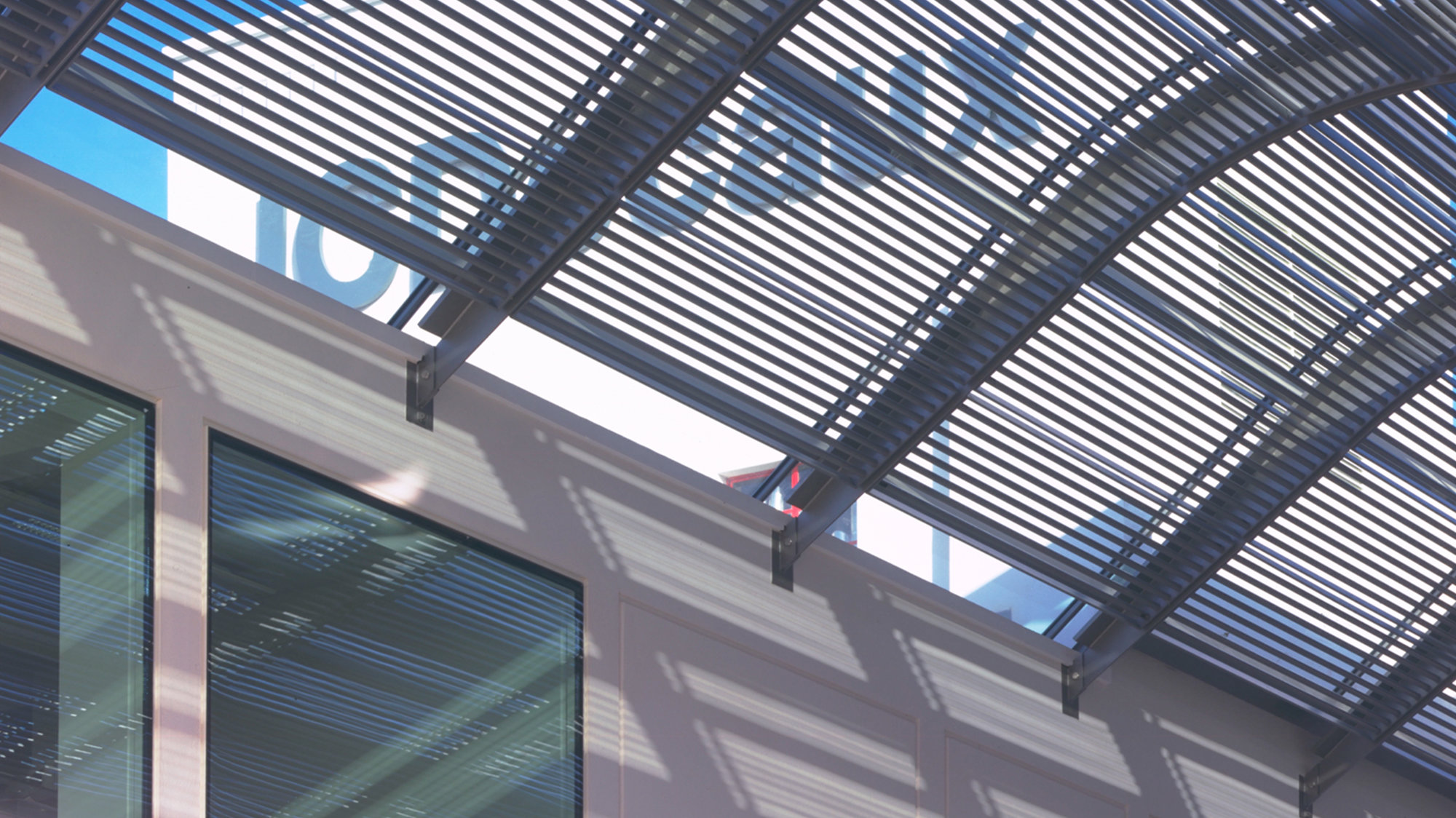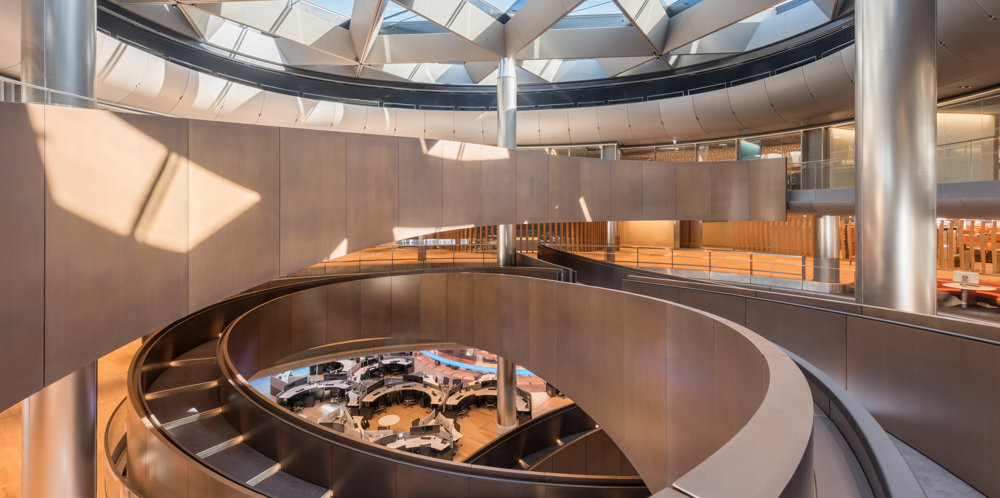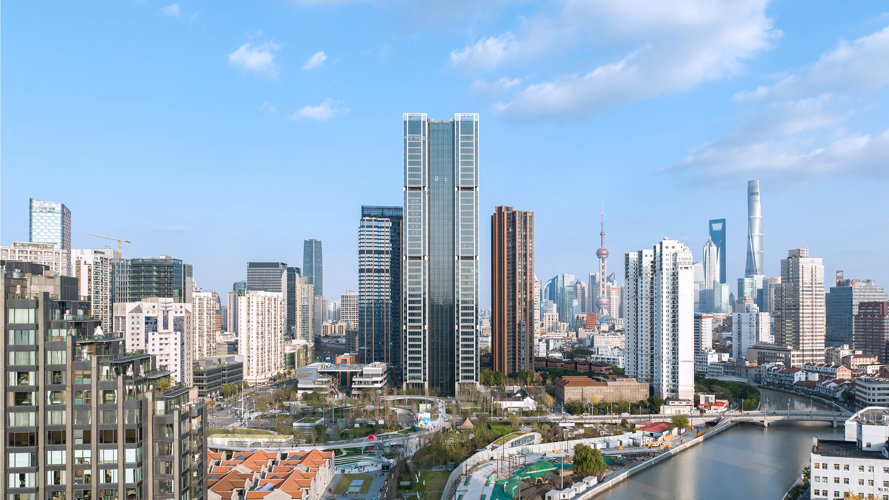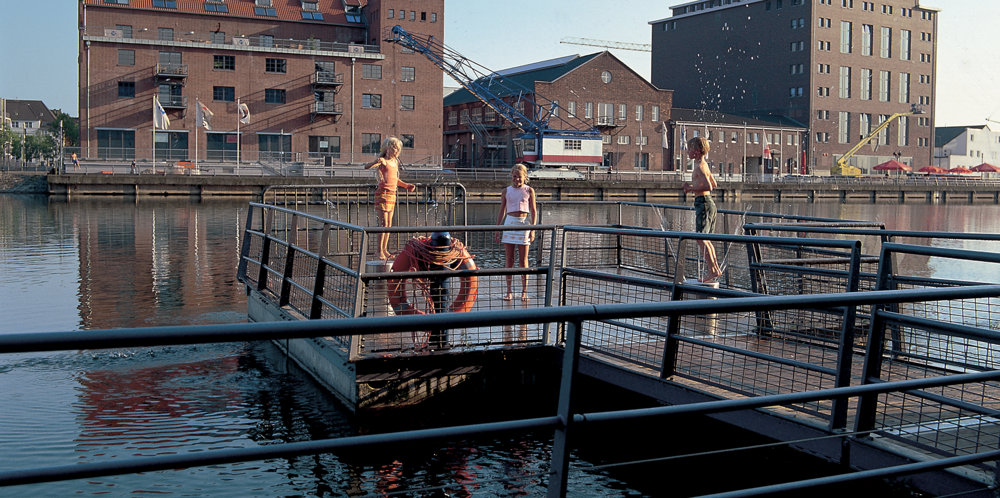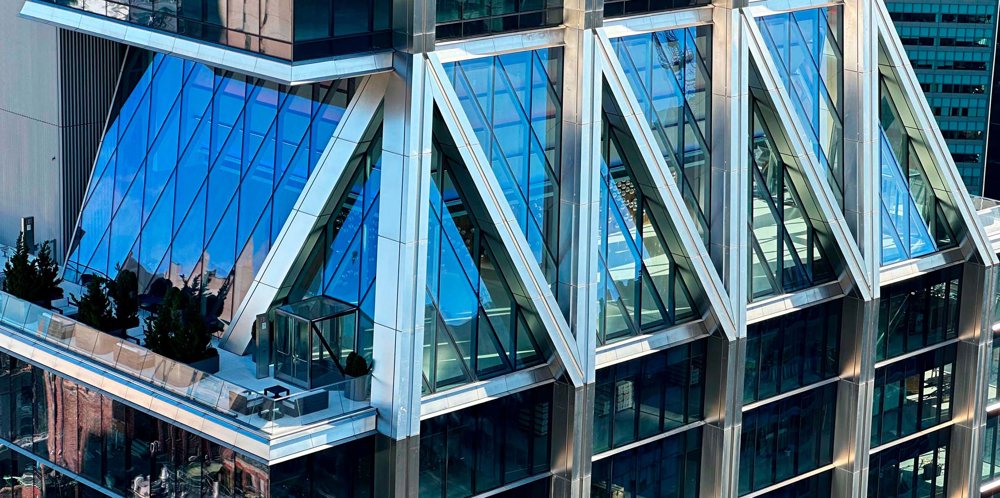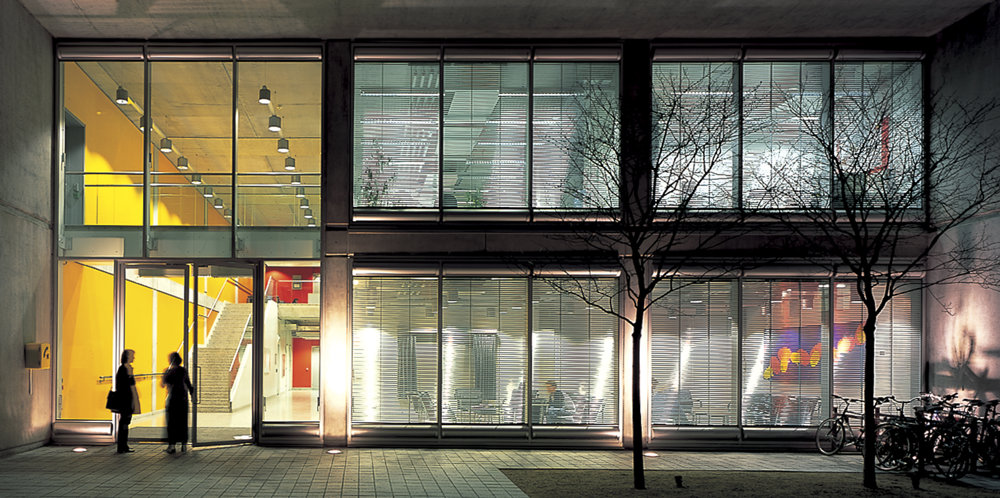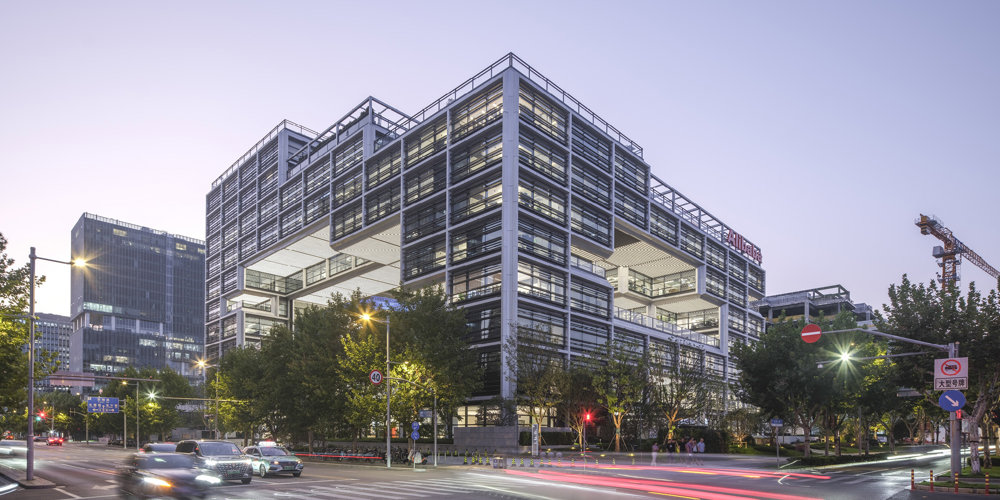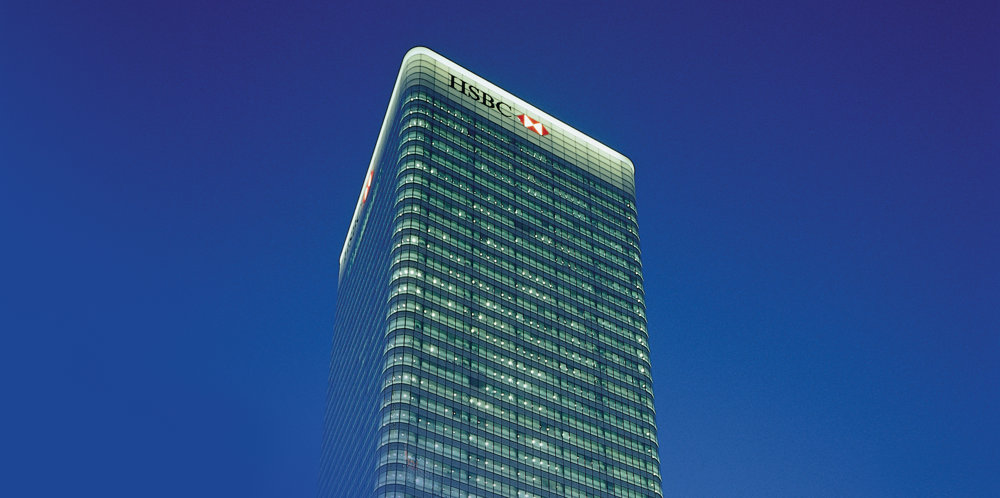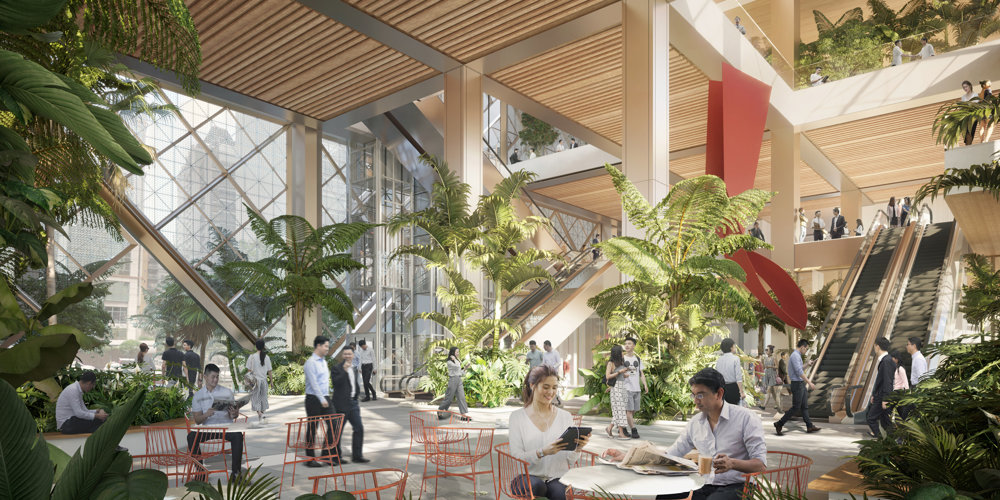JCDecaux is one of the world’s leading suppliers of street furniture and advertising space. The company emphasises design excellence and has commissioned some of the world’s leading architects to design bus shelters and advertising structures. In this capacity, over time the practice has worked with JCDecaux to develop a range of items, including advertising billboards, a bus shelter system, a city boundary sign and an updated version of the Colonne Morris - an advertising drum incorporating grit bins, benches, lavatories, a roof canopy and electronic information systems. These can be found worldwide in cities such as London, Paris, Prague, New York and San Francisco.
Building on this relationship, the practice was asked to develop the company’s international headquarters in West London. The complex has three distinct parts: a refurbished Art Deco building which forms the street frontage; a new storage warehouse; and a ‘street’ with a vaulted glazed canopy, which links the two and provides exhibition space for JCDecaux’s extensive range of street furniture. The Grade II-listed Art Deco building - built in 1936 for Curry’s Cycles and Radios - was restored in accordance with English Heritage’s advice. In addition to offices it provides a gymnasium and café.
The warehouse is a fully integrated structure, designed for maximum economy and efficiency. It employs an American system of pre-cast, thermally insulated concrete panels, known as ‘hardwall construction’, which allowed the columns and walls to be erected in only twelve days. Wall panels were simply craned into position, one on top of another, and secured with steel dowels. This system has significant benefits beyond its ease of construction: internal walls require no lining; and the panels are 97 per cent thermally efficient, leading to long-term energy savings. Circular glazed apertures cut into the aluminium roof admit sufficient daylight to light the warehouse interior on bright days. Light fittings are installed directly below these apertures so that light-pools are cast on the floor whether the space is naturally or artificially lit. The bright yellow epoxy-resin flooring reflects light back up, bathing the space in a warm glow.









